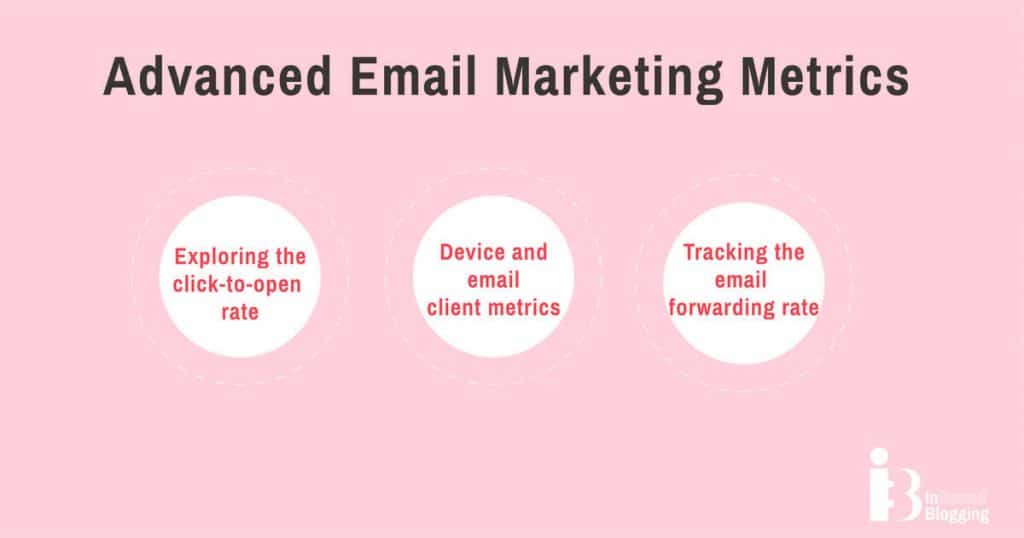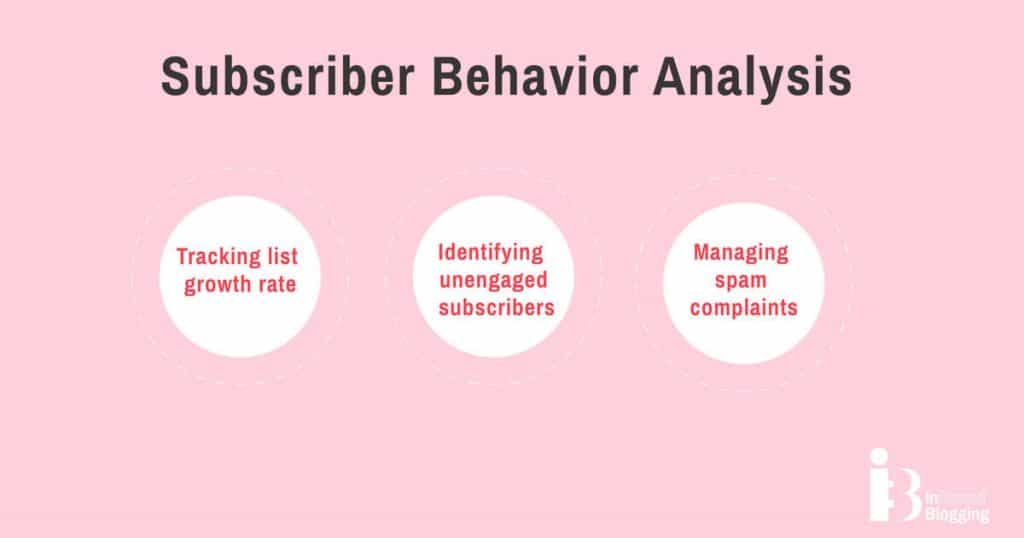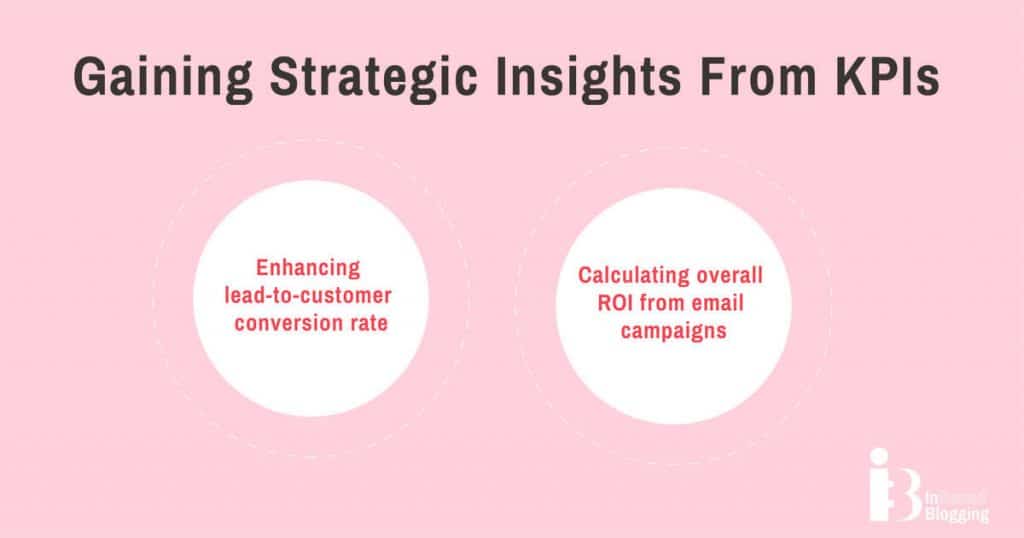Email marketing KPIs are essential for measuring the success of your email strategies and campaigns. However, with multiple key performance indicators to track and monitor, the space may get complex.
To counter these obstacles, this guide aims to show you which email marketing metrics are most important and how to calculate them.
So, let’s get started.
Email Marketing KPIs [Key Takeaways]
- Email marketing key performance indicators (KPIs) help you see if your emails are doing well. Email marketers look at metrics such as delivery and open rates, click-throughs, and those that lead to actions, such as sales figures, subscriptions, sign-ups, etc.
- Knowing about advanced metrics like the click-to-open rate (CTOR) and the email forwarding rate shows how engaging your emails are. A high CTOR means your audience is paying attention to what you’re sending.
- Keeping track of list growth and uninterested subscribers is vital for understanding the effectiveness of your email marketing analytics. While adding new people matters, you should also focus on keeping the ones on your email list happy.
- To avoid spam complaints, it’s smart to make unsubscribing easy. Monitor if and when someone marks your email as spam. This keeps your emails going straight to inboxes.
- Understanding return on investment (ROI) from email campaigns indicates if you’re making more money than you spend on sending them.
Key KPIs for Email Marketing

Keeping an eye on key email marketing numbers is pivotal for success. The delivery rate, open rate, click-throughs, and conversion figures tell you if your emails hit the mark or miss it.
Let’s take a closer look:
1. Evaluating the delivery rate
Focus on the delivery rate to see how many marketing emails reach inboxes, as it’s one of the most important email marketing KPIs. Sadly, no campaign hits 100% deliverability, highlighting the importance of tracking email marketing metrics.
Doing the math here is simple: Divide the number of emails delivered by the total sent and multiply by 100.
For example, if you delivered 800 emails and sent out 1,000, the formula would look like this:
800/1,000 x 100 = 80%
Calculating this helps you adjust your strategy. Maybe you need to clean your email list or work on making content less spammy. It pushes you to keep improving with every email sent, aiming for that inbox slot more accurately each time around. That’s because getting into the inbox is half the battle won in email marketing efforts.
2. Assessing the open rate
Checking open rates tells you how many people look at your emails. The quality of your email list and the timing of your messages play a big role. Yet, getting this right can be tough. For example, Apple’s privacy updates mean some opens might not get tracked if images don’t load.
So, track email performance consistently and compare your rates to industry standards for open rates to understand the percentage of email recipients engaging with your content. This helps you see where you stand and what you might need to tweak in your email marketing approach.
3. Analyzing the click-through rate
The click-through rate (CTR) shows the proportion of individuals who engaged with one or more links in your email.
Here’s the calculation method: Take the collective clicks or unique clicks and divide them by the number of delivered emails, then multiply by 100. For instance, if an email reaches 10,000 recipients and 500 individuals engage with a link, your CTR is 5%.
Give significant consideration to which links are garnering engagement and their location within your email content. This knowledge assists you in discerning what ignites your audience’s curiosity. Also, understanding how to arrange calls to action (CTAs) can significantly enhance the click-through rate for upcoming campaigns.
4. Measuring the conversion rate
To get the conversion rate, look at how many people did what you hoped they would against all emails that reached inboxes and contributed to the overall email marketing metrics. If 10,000 emails land and 400 people take action, your conversion rate is 4%.
The trick is integrating email marketing software with web analytics tools. This combination shows not just numbers but also where improvements are needed. Knowing your conversion rate is like understanding the heartbeat of your campaign.
A tool like HubSpot Email Marketing, with its combined email and customer relationship management (CRM) software, integrates well with many platforms and offers you the chance to fine-tune campaigns for better results next time.
Every email sent is an opportunity to learn what drives subscribers to act. With each campaign, these insights guide adjustments—pushing those numbers up a bit more each time.
Advanced Email Marketing Metrics

Exploring advanced email marketing metrics offers fresh perspectives on your emails’ effectiveness. It’s important to examine aspects like the frequency of clicks following an email opening, content sharing, or even forwarding to friends. This can help you understand your audience’s preferences and maintain their interest.
5. Exploring the click-to-open rate
Focus on the click-to-open rate (CTOR), as it tells you a lot about your email campaigns. This metric shows how many people clicked on links in your emails after opening them. Calculate it by dividing unique clicks by unique opens, then multiply by 100. So, if 50 people clicked on a link and 100 opened the email, your CTOR is 50%. A high CTOR means your messages engage subscribers well.
This insight guides you to improve your email marketing strategies for better engagement rates. It suggests strong brand loyalty when numbers are high. Aim to keep tweaking emails based on what works best—keeping an eye on this KPI helps you understand subscriber behavior better and adjust content to keep them interested.
6. Device and email client metrics
Device and email client metrics provide critical insights into how recipients access and interact with your emails. By tracking which devices (e.g., mobile, desktop, tablet) and email clients (e.g., Gmail, Outlook, Apple Mail) are most commonly used by your audience, you can optimize your email design and content accordingly.
For instance, a high mobile usage rate might prompt more responsive design choices, while understanding email client preferences can help ensure compatibility and functionality across platforms. These metrics help enhance the user experience, improve engagement rates, and drive better campaign performance.
7. Tracking the email forwarding rate
Focus on tracking the email forwarding rate to understand how your audience shares your content. It’s simple. Look at the number of times someone clicks the share or forward button and divide it by the total emails delivered. Then, multiply that by 100 to get a percentage.
For example, if 100 out of 10,000 emails get shared, that’s a 1% sharing rate. This metric is crucial because it reflects the effectiveness of your email marketing KPIs and shows which messages people find worth passing along.
Email Subscriber Behavior Analysis

Understanding how your audience interacts with your emails is invaluable. Tools like email management systems can track list growth and who’s not opening your messages, giving you the power to tweak and improve.
8. Tracking list growth rate
Always track your list growth rate closely, as it is one of the key metrics for email marketing success. It tells you how well you’re doing at adding new subscribers while keeping the ones you already have.
Here’s how it works: Take the number of new people who sign up and subtract those who leave or mark your emails as spam. Then, divide that by the total number of people in your email list and multiply by 100 to get a percentage. For example, if 500 new people join but 100 unsubscribe from a list of 10,000, your growth rate is 4%.
9. Identifying unengaged subscribers
Knowing who doesn’t open emails helps you clean your list and improve your email KPIs.
Here’s how to identify unengaged subscribers:
- Look at open rates over the last six months. Subscribers who haven’t opened an email during this time are unengaged.
- Check click-through rates (CTR). No clicks mean they’re not interacting with content.
- Review conversion rates from emails. Zero conversions signal a lack of interest or relevance.
- Use email analytics tools to track engagement patterns. Tools like Google Analytics show detailed behavior.
- Segment your list based on activity. Separate active users from inactive ones for targeted re-engagement campaigns.
- Monitor email deliverability issues to improve your email marketing analytics. Sometimes, emails land in spam. Fixing this can re-engage some subscribers to boost your email marketing key performance indicators.
- Regularly clean your list by removing bounced email addresses and those who mark them as spam.
- Conduct surveys for feedback from engaged subscribers to avoid future disengagement.
By following these steps, you make sure your email marketing remains effective and reaches those genuinely interested in what you have to say or offer, improving overall campaign performance and ensuring high-quality communication with your audience.
10. Managing spam complaints
Keeping spam complaints low is a must. Every email you send aims for success, but sometimes people mark them as spam. The trick? Act fast and smart to keep these important metrics down. If the complaint rate hits too high, it’s trouble—both for your sender reputation and email deliverability. So, monitor your emails closely.
You can use tools like feedback loops with email service providers to spot when someone flags your message as spam. This way, you can quickly remove them from your list, reducing future complaints.
Plus, making the unsubscribe option clear cuts down on those marks against you. Simple yet effective moves keep your campaigns running smoothly without landing in the dreaded spam folder.
Gaining Strategic Insights From Email KPIs

Getting smart with KPIs means you see what works to help you create emails that earn more clicks and sales.
11. Enhancing lead-to-customer conversion rate
Converting a lead to a customer is a goal every business has, irrespective of whether they’re selling products or services.
When it comes to services, with each Service Level Agreement (SLA) signed, you’re essentially onboarding a new customer. This SLA ultimately attributes value to each lead you have because every SLA is proof that you’ve got a new customer onboard who is paying for your services.
To better understand your lead-to-customer conversion rate, note that it is expressed as a ratio. It looks at two factors: the proportion of the number of qualified leads and the number of leads converted into actual sales. This is determined over a specific time frame you choose, such as monthly or quarterly.
12. Calculating overall ROI from email campaigns
Calculating ROI for email campaigns is simple yet powerful. Take the money made from sales through emails, subtract what you spent on the campaign, and then divide by that same spending. Multiply by 100 to find out the percentage of your return on investment.
For example, if you make $1,000 in sales from an email and it costs you $100 to send it out, your math looks like this: [(1,000 – 100)/100]x100.
This gives you a 900% ROI. It shows clearly how effective email marketing can be for earning back more than you spend.
Tracking your success by understanding your numbers helps you see exactly where your efforts are going right or wrong. By using this formula, you ensure that every dollar put into your email marketing works as hard as possible.
When you focus on determining the total ROI from your email campaigns, which can go up to $44 for every $1 spent, you get nsights into the returns earned from each email versus the expenditure on their dissemination.
Expert Opinions
We gathered expert thoughts and opinions on the topic of email marketing KPIs, and here’s what industry leaders had to say.
Track clicks and conversions
“The rules of the game are always changing, especially with privacy updates. That’s why I stay flexible and adjust my approach. Open rates used to be a big deal, but with new privacy measures like Apple’s Mail Privacy Protection inflating these numbers, they don’t reflect true engagement anymore. Instead, I focus on clicks to see what grabs people’s attention and conversions.” — Swapnil Kumar, Growth & Marketing Manager, Smartlead
Monitor key email metrics
“A good conversion rate typically falls between 2-5%; on the contrary, the unsubscribe rate should be less than 0.5%. Exceeding this threshold indicates issues with content and frequency. To improve performance, you should keep monitoring trends and make amendments to strategies based on your customer behavior and privacy regulations. For instance, be aware of regulations like GDPR and Apple’s Mail Privacy Protection, as they directly impact metrics like open rates. Here’s a tip: you can keep refining your approach and maintain compliance by using real-time data and A/B testing. It improves CTR significantly.” — Tom Jauncey, Head Nerd, Nautilus Marketing
Go beyond vanity metrics
“We prioritize email marketing KPIs that go beyond vanity metrics because we want to see the real impact of our campaigns—not paint a pretty picture of our efforts. We look at the deliverability rate to see how many of our emails are making it to user inboxes and to manage email list hygiene, and we follow the unsubscribe rate to gauge how interesting and relevant our content is to our audience to find the right flow and frequency. Our ultimate KPI is our email conversion rates—we want to see how well our budget and efforts inspire our audiences to take action. If we’re not creating a viable ROI, it’s time to rework our approach or scrap an underperforming campaign.” — Elisa Montanari, Head of Organic Growth, Wrike
Align KPIs with company goals
“The most important KPIs for email are CTR, reply rate, and deal made. Success depends on your target goal. If you’re trying to get an audience to install or sign up for something, then CTR is an important KPI. For link building purposes, a successful agreement and link insertion would be a KPI to measure. We stopped using open rate as a KPI. Content matters most. If it’s not engaging, solving a problem, or to the point, you won’t see CTR or replies. Our focus has now shifted to quality email content. All KPIs must align with the overall company KPIs. That means if your company’s goal is to drive sales, then your team’s KPI should relate to that.” — Lindsay Lalonde, Head of Outreach and Digital PR, Ling-App
Conclusion
Mastering email marketing KPIs is pivotal for measuring the success of your email campaigns. You need to monitor delivery rates, open rates, click-through rates, and conversion rates using specialized tools.
Tools can transition uncertainty into accuracy by providing clear metrics. They help you recognize which emails work and why. Acting on these insights, you ensure each campaign outperforms the previous one.
My suggestion? Closely watch your email marketing statistics. They direct every successful email marketer to accomplish their objectives with confidence and clarity, especially when tracking important email marketing key performance indicators.
FAQ
What are the top email marketing KPIs to track for success in 2024?
The top email marketing KPIs you should be tracking include open rates, click-through rates, conversion rates, and revenue per email.
How can I improve my email strategies using email KPIs?
By measuring your essential email marketing KPIs, such as your open or click-through rates, you can understand what works and make necessary adjustments to increase effectiveness. You can also use email verification tools to help your efforts.
How does understanding email marketing performance metrics contribute to success?
Knowledge about email marketing performance metrics helps fine-tune future campaigns based on past results. It’s all about learning from previous outcomes and making informed decisions moving forward.


![The Best Email Marketing Tools to Boost Your Campaigns in 2024 [Based on Survey Results] Best Email Marketing Tools](https://inboundblogging.com/wp-content/uploads/2024/08/best-email-marketing-tools-150x150.jpg)
